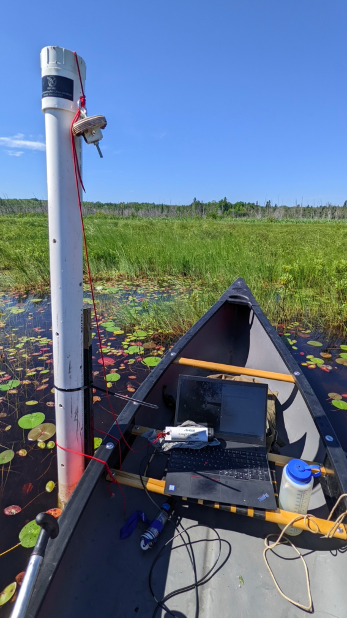
PME Welcomes Christina Linkem as a Participating Researcher in the New Researcher Program
October 26, 2022
Sea Technology Magazine Features the miniDOT® Logger
March 8, 2023Manoomin: Plant and Prophecy
Manoomin (wild rice) is the “the good berry/seed”, whose presence fulfilled the prophecies foretold in the Anishinaabe’s migration from the east. When they found the “food that grows on water” within the Great Lakes’ coastal wetlands, the Anishinaabe knew their journey had ended. Manoomin is a staple in the traditional diet of the Anishinaabe people of this region and continues to be an essential component of many ceremonies, feasts, and daily living. Today, descendants of the several tribes making up the Anishinaabe people call the L’Anse Indian Reservation home. Served by the Keweenaw Bay Tribal Council, the reservation is located in upper Michigan on the shores of Lake Superior.

In addition to its cultural significance, wild rice has played a vital ecological role in the larger Great Lakes region. The presence of wild rice on calm inland waters served as a buffer against eroding winds sweeping off the lakes, and its complex root system enhanced water quality by securing looser sediments. Wild rice has also been an important food source for waterfowl, fish and other animals who utilize the waterbodies. Unfortunately, the past century has seen a near-eradication of wild rice in the Great Lakes. In the interest of seeing this culturally and ecologically significant species restored to the upper western peninsula of Michigan, the Keweenaw Bay Tribal Community has been working to bring rice back to the landscape since the early 1990s.
Successful reintroduction of self-sustaining wild rice populations goes beyond seeding efforts and include careful monitoring of the water, pore water and sediment in the area. When searching for dissolved oxygen monitors, researchers Dave Runquist and Erin Johnston credited Precision Measurement Engineering’s (PME) excellent customer service as a deciding factor behind their choice of the miniDOT® Logger. Runquist and Johnston deployed the miniDOT® Loggers within stilling-wells across three waterbodies: two within the Reservation and one outside of the Reservation.
One of the locations has an active wild rice bed, another has variable rice growth due to the coastal nature of the system and ever-changing water levels and the third was seeded with wild rice in the 1990s but has not had a wild rice bed in over a decade. With the miniDOT® Logger, Runquist was able to record data on the variation in the water’s dissolved oxygen with an accuracy of +/- 5% and temperature shifts accurate to +/- 0.1 degrees C throughout the growing season of wild rice. The data collected by the miniDOT® Logger will serve to inform the Keweenaw Bay Indian Community and partners in continuing efforts to restore/establish wild rice to historic levels of abundance across the region.

One of the locations has an active wild rice bed, another has variable rice growth due to the coastal nature of the system and ever-changing water levels and the third was seeded with wild rice in the 1990s but has not had a wild rice bed in over a decade. With the miniDOT® Logger, Runquist was able to record data on the variation in the water’s dissolved oxygen with an accuracy of +/- 5% and temperature shifts accurate to +/- 0.1 degrees C throughout the growing season of wild rice. The data collected by the miniDOT® Logger will serve to inform the Keweenaw Bay Indian Community and partners in continuing efforts to restore/establish wild rice to historic levels of abundance across the region.






